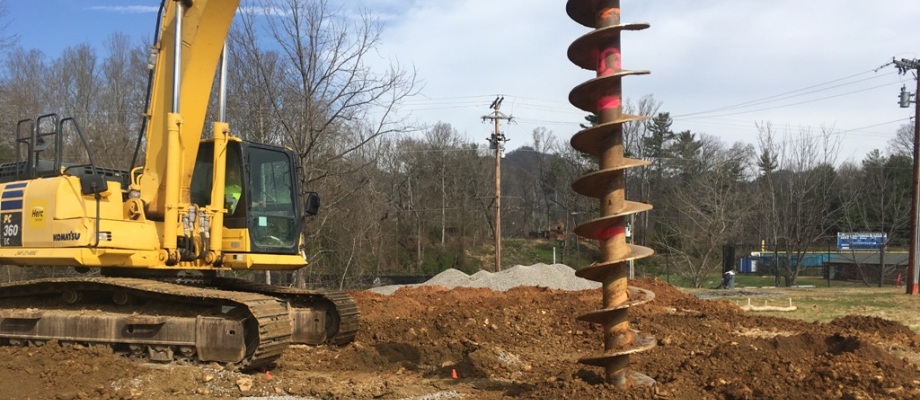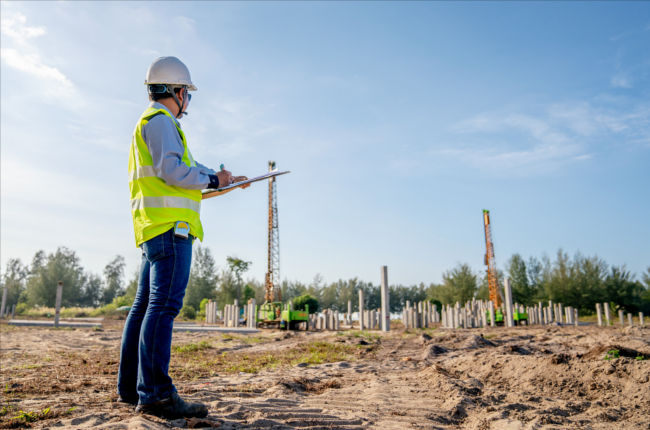Navigating the Intricacies of Geotechnical Eng Projects
Navigating the Intricacies of Geotechnical Eng Projects
Blog Article
A Detailed Overview of the Trick Responsibilities of Geotechnical Designers in Site Characterization and Ground Enhancement Methods for Design Solutions
Geotechnical designers are indispensable to the successful implementation of engineering tasks, charged with the crucial duties of site characterization and the application of ground renovation techniques. Their work includes an extensive evaluation of subsurface problems, using numerous screening techniques to determine soil and rock buildings. This foundational expertise not only notifies style choices but likewise minimizes potential threats connected with ground instability. As we check out the complex duties of these professionals, it ends up being apparent exactly how their proficiency shapes the security and performance of engineering options. What particular strategies and assessments stand apart in this important discipline?
Duty of Geotechnical Designers
Geotechnical designers play a critical role in the layout and building and construction of facilities by evaluating the actions of soil and rock underneath the surface area - geo tech engineering. Their obligations include evaluating subsurface problems to notify layout decisions that make sure architectural security and safety and security. By carrying out thorough analyses of soil residential or commercial properties, consisting of shear toughness, compressibility, and permeability, geotechnical engineers give vital information that influences the option of suitable construction materials and methods
In enhancement to assessing dirt auto mechanics, geotechnical engineers are entrusted with recognizing prospective dangers such as landslides, sinkholes, and ground settlements. Their know-how helps mitigate dangers linked with these geotechnical phenomena, thereby shielding both the setting and public security. They also collaborate closely with other design techniques, making sure that geotechnical considerations are integrated right into overall task design.
Moreover, geotechnical engineers take part in the assessment of existing structures, offering suggestions for retrofitting and repair work when essential. Their comprehensive understanding of soil-structure communication is crucial for the advancement of sustainable infrastructure options. Generally, the duty of geotechnical engineers is indispensable to the successful awareness of building and construction jobs, guaranteeing they are risk-free, resilient, and compliant with regulatory criteria.

Site Characterization Procedures
Effective site characterization procedures are necessary for comprehending the subsurface problems that influence project design and implementation. Geotechnical designers use a systematic method to collect, examine, and translate information concerning rock, soil, and groundwater attributes. This procedure begins with a comprehensive evaluation of existing literary works and archaeological site information, providing insights right into previous site conditions and prospective challenges.

Information evaluation follows fieldwork, where designers make use of geostatistical approaches to interpret findings and develop geological designs. Through attentive site characterization, geotechnical engineers lay the groundwork for successful task execution, maximizing and reducing unanticipated difficulties resource allotment.
Dirt and Rock Screening Methods
While comprehending subsurface conditions is critical, the choice of ideal dirt and rock screening techniques is just as important for precise evaluation and layout. Geotechnical engineers utilize a range of testing strategies to evaluate the physical and mechanical residential or commercial properties of soil and rock materials.
Lab examinations, such as Atterberg restrictions, grain dimension analysis, and unconfined compressive stamina examinations, supply necessary data on soil habits under different moisture problems and loading circumstances. These examinations assist figure out dirt category and forecast negotiation or shear stamina characteristics important for foundation layout.
In-situ screening methods, including Standard Penetration Examinations (SPT), Cone Infiltration Tests (CPT), and pressure meter examinations, permit designers to collect information directly from the ground. These methods offer important insights into the soil's thickness, uniformity, and stratification without the demand for extensive tasting.
Rock testing typically involves core tasting recommended you read and lab evaluation to examine buildings like uniaxial compressive stamina and rock quality designation (RQD) Together, these soil and rock screening techniques enable geotechnical designers to make educated choices regarding site-specific challenges, guaranteeing the safety and security of design remedies.
Ground Enhancement Techniques
Ground renovation methods are necessary for improving the design residential properties of dirt, therefore boosting its load-bearing capacity and lowering settlement. These methods are crucial in attending to challenges provided by problematic or weak dirts, which can considerably affect the security and longevity of frameworks.
Numerous ground improvement techniques are employed, consisting of compaction, grouting, and dirt stablizing. Compaction entails enhancing the thickness of soil via mechanical methods, which enhances its shear toughness and minimizes compressibility. Grouting, on the other hand, involves injecting a fluid material right into the ground to fill gaps and boost soil communication. This method is specifically reliable for treating loose sands or fractured rock.
Dirt stabilization encompasses a variety of techniques, from chemical ingredients to mechanical therapies, aimed at enhancing the soil's resistance to disintegration and contortion. Methods such as lime stablizing or cement mixing modify the residential properties of the soil at a fragment level, boosting its overall performance.
Relevance of Geotechnical Analyses
Geotechnical evaluations play a critical duty in the planning and layout of engineering projects, as they offer crucial info about the subsurface conditions. Understanding soil residential or commercial properties, rock formations, groundwater levels, and possible geohazards is crucial for making sure the security and safety and security of structures. These analyses allow engineers to make educated choices relating to site choice, style parameters, and building and construction methods.
The significance of geotechnical assessments extends past initial job stages; they contribute in threat management and price efficiency. By recognizing prospective concerns early, such as soil negotiation, incline instability, or extreme groundwater, engineers can design appropriate reduction strategies, lowering the possibility of structural failings and pricey hold-ups. These analyses support conformity with governing requirements and enhance the sustainability of design practices.

Final Thought
Finally, geotechnical designers are vital to making certain the security and security of engineering projects through detailed site characterization and ground enhancement techniques. geo tech engineering. Their organized you can look here method to analyzing subsurface problems, incorporated with their referrals for effective ground modification, substantially enhances soil buildings and load-bearing capacity. The experience of geotechnical engineers not just facilitates informed job preparation but likewise makes sure conformity with policies and promotes reliable communication among stakeholders, inevitably adding to effective engineering end results
Geotechnical designers play an essential role in the layout and construction of facilities by examining the behavior of dirt and rock beneath the surface. By conducting comprehensive evaluations of dirt residential properties, consisting of shear compressibility, leaks in the structure, and toughness, geotechnical engineers offer essential data that influences the selection of appropriate construction products and strategies.
In enhancement to examining soil auto mechanics, geotechnical designers are charged with recognizing possible dangers such as landslides, sinkholes, and ground settlements. Geotechnical engineers employ a systematic approach to collect, evaluate, and interpret information regarding groundwater, soil, and rock characteristics. By check here identifying potential issues early, such as dirt negotiation, slope instability, or too much groundwater, designers can create suitable mitigation approaches, minimizing the chance of architectural failings and costly hold-ups.
Report this page